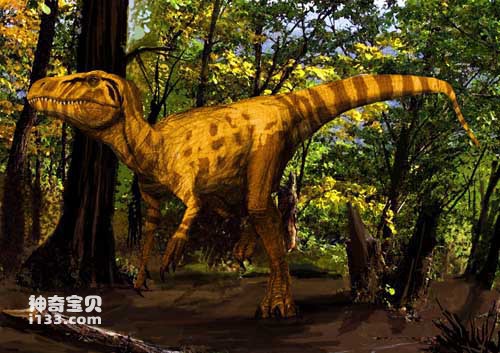Among the many dinosaurs discovered so far, Eoraptor is the most primitive one. In 1993, Eoraptor was discovered in the Ischiguarasto Basin, an extremely barren and barren land in northwestern Argentina, South America, which belongs to the Triassic strata.
The discovery of Eoraptor was purely accidental. At that time, an excavation team composed of Sereno, Ruba and their students were conducting a scientific investigation in the Valley of the Moon. They actually found a nearly complete skull in a pile of rubble abandoned on the roadside. Fossils, so the excavation team struck while the iron was hot and repeatedly "swept" the area around the rubble. Not long after, a very complete dinosaur skeleton appeared in front of them. What was even more surprising was that they had never seen this species before.
They named it Eoraptor. Compared with Herrerasaurus, Eoraptor is like a cat compared to a tiger, because it is only a few centimeters long, less than 1 meter, and weighs only 5 to 7 kilograms. Interestingly, on the upper and lower jaws of Eoraptor, the teeth at the back are like slotted steak knives, similar to other carnivorous dinosaurs; but the teeth at the front are leaf-shaped, similar to other vegetarian dinosaurs. This feature suggests that Eoraptor likely ate both plants and meat.
The serrated teeth of Eoraptor undoubtedly showed its identity as a carnivorous dinosaur, and it had hands that were good at catching prey. From the forelimb fossils of Eoraptor, we can infer that Eoraptor was capable of catching and killing prey of similar size to itself. Although we cannot accurately reproduce the attacking behavior and hunting process of this dinosaur, it is not difficult to imagine from its light and muscular body that Eoraptor was able to hunt quickly, and its diet was certainly not limited to small crawlers. Animals, perhaps including the earliest mammals - our ancestors...
Some characteristics of Eoraptor prove that it is one of the earliest dinosaurs on earth. For example, it has 5 "fingers", while the number of "fingers" of carnivorous dinosaurs that appeared later tended to decrease. At the end, large carnivorous dinosaurs such as Tyrannosaurus rex had only two "fingers" left. For another example, Eoraptor had only three vertebrae in its waist to support its small belt. However, as later dinosaurs became larger and larger, the number of vertebrae in the waist that supported the belt increased.
The emergence of Eoraptor and Herrerasaurus in the Late Triassic represents the dawn of the age of dinosaurs.

Chinese name: Eoraptor
Latin name: Eoraptor
Age of survival: Late Triassic
Fossil origin: Argentina
Physical characteristics: about 1 meter long
Diet: Carnivorous
Type: Theropod
Definition: Thief of Dawn
animal tags: Eoraptor
We created this article in conjunction with AI technology, then made sure it was fact-checked and edited by a Animals Top editor.